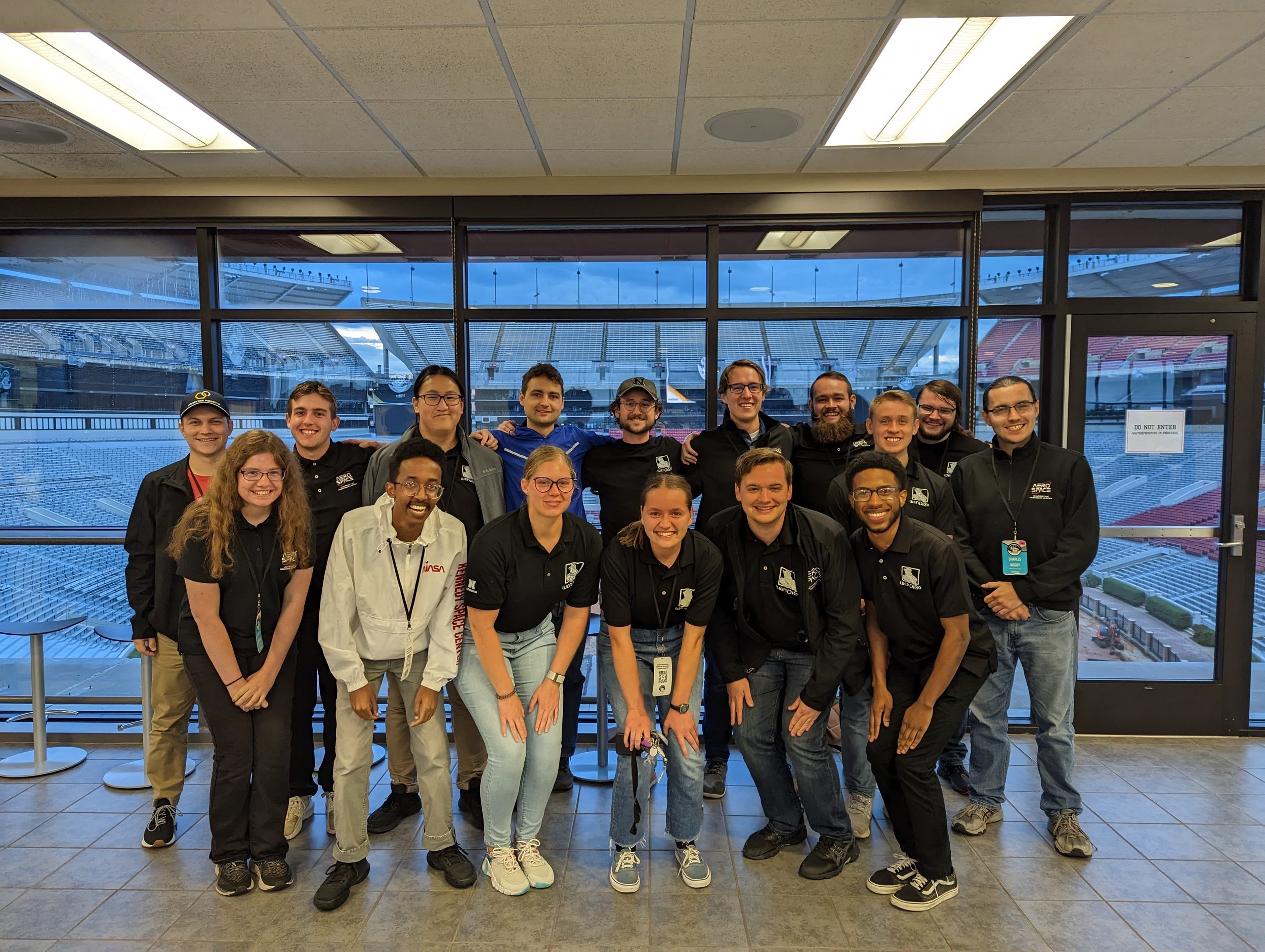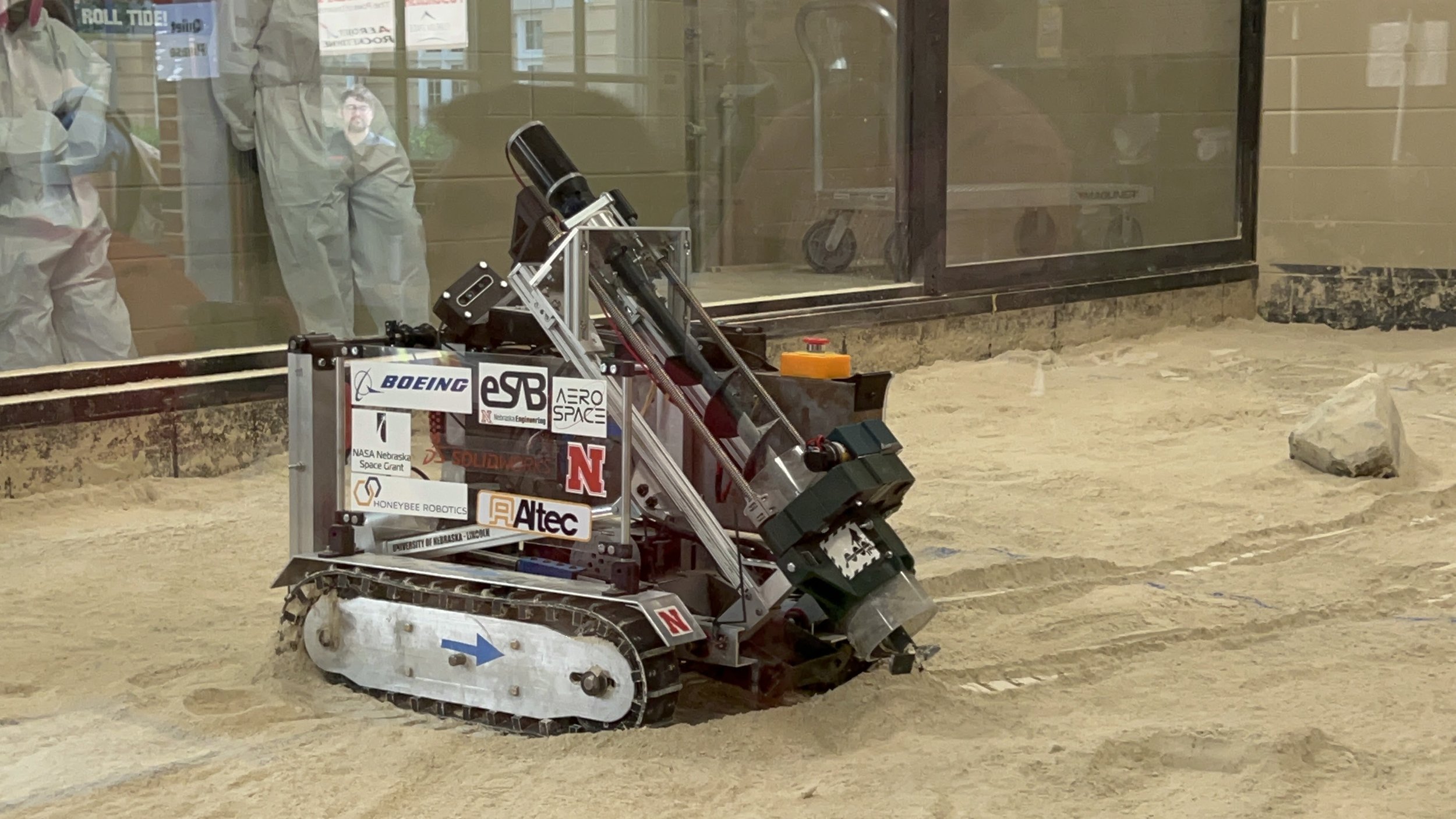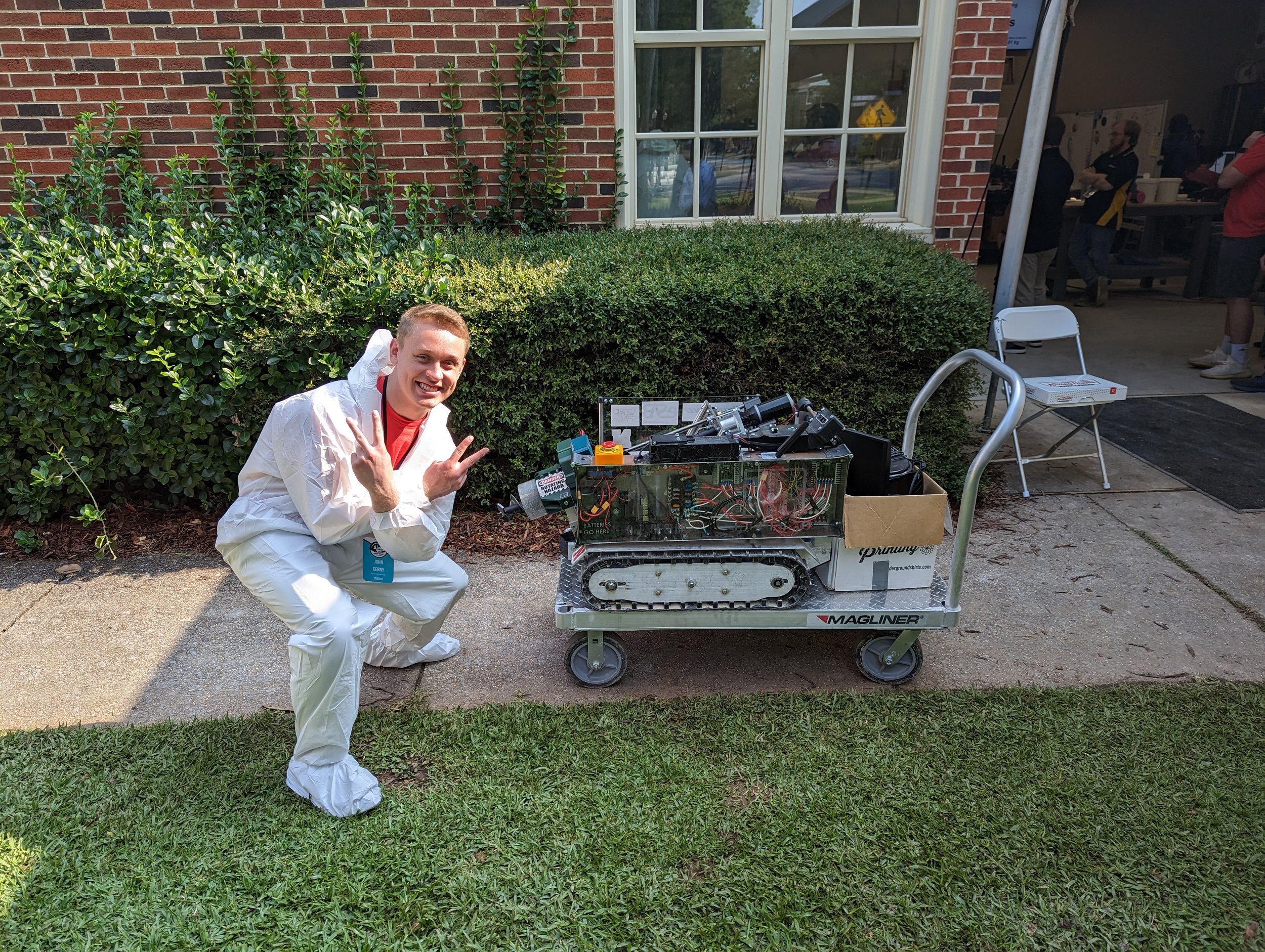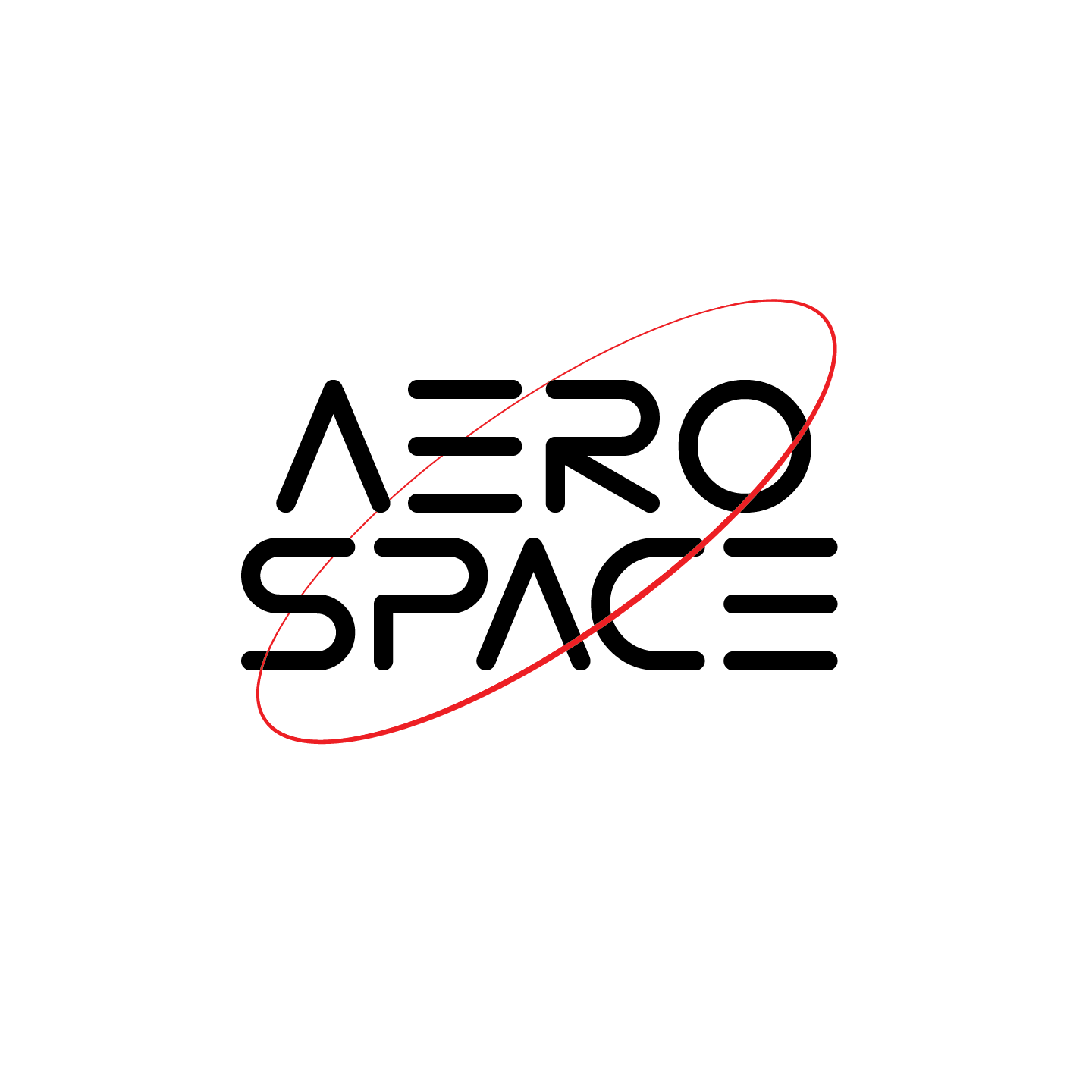

Lunabotics
Lunabotics
The NASA Lunabotics team works to help NASA with its mission to explore Mars and the Moon. Each year the team competes in the NASA Lunabotics Mining Competition (Moon) or Robotic Mining Competition (Mars) at the Kennedy Space Center in Florida. The goal is to build a robot that can traverse a simulated Martian or Lunar terrain in order to collect materials. NASA uses this competition to fuel ideas for its own future missions.
Projects
Projects
Competition overview
The annual NASA Robotic Mining Competition arena has three zones: starting, obstacle, and mining. The robots must start in the starting zone, cross the obstacle zone where there are craters and large rocks, collect material in the mining zone, and return the material to the starting zone to deposit in a collection bin. Each team is given two competition runs of ten minutes each to try to collect as much material as possible. There are mass, size, and material constraints teams must adhere to in order to compete. Points and awards are given to teams based on mining, autonomy, efficiency, dust control, innovation, systems papers, slide presentations, and outreach. NASA uses BP-1, a crushed basaltic aggregate, to simulate the Martian surface and beneath that is a layer of gravel to simulate the icy regolith on Mars. Each year NASA changes the rules slightly to emphasize certain aspects of the competition. Most recently they made the BP-1 worth zero points in the mining category to encourage teams to dig down to the gravel.
Since 2024, the challenge has been changed from mining to berm building. Instead of mining rocks, the new robot will need to collect as much simulated regolith as possible to build the largest berm in the designated building area of the arena.
2024-25 competition
Similarl to the 2023-24 competition, the 2024-25 competition has an objective to mine and deposit the most amount of lunar simulant possible. A big change in the rulebook is that the points recieved from the berm is callculated based on the rover’s mass and energy usage. This change has created a much bigger shift in the teams consideration of weight and energy usage.
This competition cycle, the team has also created a new subteam focused on documentation and an emphasis on systems engineering, logically the subteam is called the Systems Engineering Subteam. The team has already found a big value with implementing this subteam. The competition gives a lot of scoring points on a systems paper; with the new subteam the preliminary calculations, design process, revisions, and more documentation is saved to be able to make a more thorough paper. In addition the team has made presentations to present to our sponsors as the year progresses. Another very useful result of implementing this system is the yearly knowledge that can be passed down to future competitions, this includes ideas that worked, what didn’t, contact info, templates for calculations and presentations.
Currently the team has designed the rover, and is actively building and testing parts of the rover. The team has a proof of life scheduled for April 21st.
The 3d Solidworks model featured showcases the rover design.
This design features a high track design for drivetrain which keeps the drive motor out of the way of manuvering. The hopper design uses a dump truck design to deposit large quantities of the lunar simulant very quickly. The excavation subteam uses an extending trencher design minimizing motor use and increases speed of excavation.
2023-24 Competition
The 2023 - 2024 competition had a different objective than in prior year. Previously, the goal was to mine and deposit rocks remotely in a simulated lunar environment. Now, the robots are designed to dig a large quantity of lunar dirt and deposit it in a construction zone to build a berm. This new challenge forced our team to explore new design ideas.
The rover changed it design significantly from an auger to twin trenchers for speed and volume of excavated material. It also featured a large hopper system, and a tank track drivetrain design. This robot scored 6th place out of the 40+ teams at the qualifying competition hosted by University of Central Florida. Since our team placed in the top 10 qualifying teams we were able to compete at Kennedy Space Center. Unfortunately, tragedy struck when our communications system broke in an accident, resulting in no communication with the ground station and stopping our rover dead in its tracked. So, we scored 10th place.
2022-23 COMPETITION




The Lunabotics team preformed well at the 2023 RMC competition hosted by Alabama State University by placing 4th out of 30 teams, receiving the Leaps and Bounds Award for most improved team, placing 1st for the Public Outreach Award, receiving a perfect score for the Project Management Plan, and earning the Pheonix Award.
The robot featured an auger excavation system that scooped rock into the hopper. Once the tank track drive train carried the robot over the simulated lunar terrain, the hopper would deposit its material into the collection bin.
CAD Model
MEMBERS
We are a team of people with a passion for innovation and aerospace robotics. The team is open to people in any major or discipline and with any level of experience. Members of this team participate in research, brainstorming, designing, 3D modeling, programming, and manufacturing of the robot. As such, this team is a great way to gain hands on experience outside of the classroom. The competition is also a great way to make connections with NASA members and we have had multiple team members land internships with NASA in the past.
2024-25 team leads
Head Lead: Nicholas Witulski
Head Lead Apprentice: Jacob Zitek
Drive Train Lead: Jacob Zitek
Hopper Lead: Juriah Lawson
Electronics Leads: Priyankka Nanrudaiyan
Software Lead: Morgan Cude
Excavation Lead: Samuel Schuster
Systems Engineering Lead: Karson Swartzbaugh
Outreach Lead: Alex Johnson





